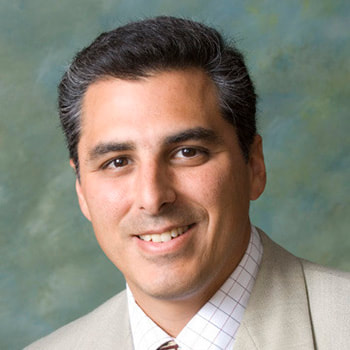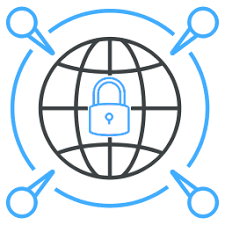The "Steve Jobs loophole" for California Temporary License Plates - Michael Towner, Iconic Legacy1/31/2020  California did not issue temporary license plates for new vehicle purchases until 2019. Prior to 2019, California was unusual among the U.S. states in not requiring any form of temporary license plate. Vehicle dealers were still required to electronically report sales of new vehicles to the DMV, but they were only required to print out a DMV report-of-sale form at the time of sale. Newly purchased vehicles typically drove around for a month or more with nothing but a dealer's advertisement or logo on a paper plate insert where the license plate would go, and the DMV report-of-sale form was instead taped to the windshield. This made the new vehicle essentially "untraceable" both by plain visual observation by persons, and by automated means such as license-plate reading systems, red light cameras, and automatic number plate recognition.  This led to an epidemic of drivers of newly purchased vehicles cheating tolls on bridges and toll roads where a transponder system is used instead of toll booths, causing the state to lose $15–19 million per year. Because of this, new state legislation was adopted in 2016 requiring temporary license plates in California beginning in 2019. The DMV's reporting system was modified so that dealers could print out the temporary license plates on special paper. The law was inspired by the hit-and-run death of a pedestrian who was struck by a car with dealer paper inserts, and because it had no temporary plates it was impossible to trace the suspect. California's previous lack of a temporary plate requirement was jokingly known as the "Steve Jobs loophole" due to the one-time Apple CEO's habit of keeping rolling six-month leases on a series of Mercedes-Benz SL55 AMGs specifically to avoid having to put license plates on the cars. California's previous lack of temporary plates was also taken advantage of by criminals, who knew that a car driving with a dealer ad paper insert was both untraceable and did not raise suspicion.
0 Comments
An embattled nonprofit with close ties to top state lawmakers, the NYS Association of Black & Puerto Rican Legislators, in 2017 hired a prominent Albany lobbyist to boost its fundraising capabilities, according to newly released tax records. The hiring of Patrick B. Jenkins and Associates paid off, as the nonprofit, which is the focus of an investigation by the state attorney general’s office, raised substantially more revenue and gave out almost as much scholarship money to needy youth as it had for the three previous years combined. Even before Jenkins’ hiring, questions had been raised about the lawmakers’ charity receiving significant funding from interests with business before the state Legislature. Jenkins, meanwhile, in the past has raised significant campaign dollars for lawmakers by soliciting donations from its own roster of influential clients, then lobbying some of those same state lawmakers for the clients. The filings also reveal several inconsistencies in the charity’s previous filings submitted to Attorney General Letitia James’ office, and raises more questions about the charity’s spending for that year and those prior, including how much money it was giving to students in need. The group’s new filing, which covers the 2017-18 tax year, is a focus of the state attorney general’s probe, according to a source with knowledge of the matter. The tax documents apparently were posted to the attorney general’s website within the last two days. A spokeswoman for the attorney general’s office declined to comment, citing its ongoing investigation. Assemblywoman Latrice Walker and Assemblyman Gary Pretlow, the nonprofit’s chairwoman and treasurer, respectively, did not return calls for comment. A spokesman for the association, Hank Sheinkopf, said Walker restructured the organization when she took over as chair in 2017. “A new accounting and auditing team has been hired and the attempt is to ensure that everything is being complied with and all filings are being brought up to date,” he said. Click here for more info.
 As of December 31, 2019, the California Legacy specialty license plate is now on 820,426 California registered vehicles and raised $26,886,737.00 in 2019. This is up from 669,083 in December, 2018. The Kids plate is the closest by volume, which is now at 104,969, down from 107,721 in 2018 and raised over $3 million in 2019. The Whale Tail specialty license plate is now at 76,765, down from 79,934 in 2018, and raised $5,086,534 in 2019. The Arts specialty license plate is now at 48,270 (down from 50,485 in 2018) and raised $3,182,981.00 in 2019. There are 13 California specialty license plates.  92,000 Iowa Blackout plates have been issued since they were introduced on July 1st of 2019. That's triple the number of University of Iowa plates, which was previously the most popular specialty plate. Paul Cornelius with the Iowa Department of Transportation says the agency had no idea the blackout plates would be so wildly popular. "The way that this has grown so fast and been so successful, ya, it's been kind of eye opening and shocking," said Cornelius. By comparison, there are just over 30,000 University of Iowa specialty plates currently in use. Those plates have been in existence since 1989. There are roughly 19,400 Iowa State University plates in use, which is the third most popular in the state. The blackout plates are also among the most expensive specialty plates in Iowa. They cost $30.00, and spike to $60.00 if they're personalized. Iowa and Iowa State plates sell for $25.00 and jump to $50.00 if personalized. Revenue generated from specialized license plates flows into the "road use tax fund", which is used for repairs and infrastructure upgrades. Cornelius says money from the blackout plates, which generated roughly $4 million in their first six months, will help at a time of need for the fund. "You know how bad the flooding has been this year," Cornelius said. "There's just a lot of repairs that have to have been done from a lot of that stuff. This fund, it's kind of like that's a big pot that it goes to." Still, 94% of all license plates issued in the state are the standard county plates. $932 million is generated from vehicle registration fees, of which license plates are a small portion. In six months, the 'Blackout' plate has already raised nearly twice as much as the 2019 top selling plate in Florida, where there are nearly double the amount of registered vehicles. Donors are pouring money and goods into Australian bushfire relief efforts, as organizations struggle to direct the contributions to where they can do the most good. Charity directors say some donors likely have only a vague sense of where their money is going. A Facebook fundraising event for a rural fire service that had a goal of $20,000 took in $34 million, making it the largest one ever on the platform. A fire commissioner said the organization will likely spread around the windfall to fire victims or other fire services. Meanwhile, the Australian Red Cross has raised about $67 million in individual contributions since July 1, compared with $7.5 million during a drought appeal last year. And a wildlife rescue group in New South Wales has raised $9.6 million, likely siphoning off donations to other regions as donors may have thought they were contributing generally to help animals caught in the inferno. Australian philanthropist Andrew Forrest is touring the U.S. seeking support for efforts to prevent and mitigate fire disasters worldwide. He and his wife, Nicola, have pledged $48 million through their Minderoo Foundation in response to the bushfires raging in Australia. The foundation has set up a fire fund to accept donations and hopes to raise more than $344 million for fire-resilience efforts.
 LifeWorks continues their fight to end youth homelessness in Austin this year with a brand-new affordable housing facility for young people and families. The Works II is a 29-unit building in east Austin, adjacent to their existing facility. The grand opening is January 21. There are two bedroom, one bedroom and efficiency units to fit the needs of each individual client. Their stay can range from one to two years, or even longer if that’s what they need to get on their feet. “When we have youth coming right off the street and into an apartment, this could be their very first home,” Hanckel said. “To see our clients and youth walk in and burst out into these big smiles and their eyes well up with tears, it is such a heartwarming moment.” With each unit, a step closer to their goal. In November 2019, residents began moving in to the Works II, and the building is currently at 72% capacity. “That may not seem like a lot. It may seem like a very small number given the work that we have to do,” said LifeWorks Director of Communications and Marketing Julianne Hanckel. “But as we continue to move forward, and we continue to spread awareness, we really want to create that feeling that this is achievable.” The goal they’re hoping to achieve: becoming the first major city in the U.S. to end youth homelessness by December 2020. They base their success off the government definition for “functional zero.” That means the number of young people entering homelessness is equal to the number of young people who are being housed. Hanckel said right now, LifeWorks has identified 450 youth, aged 18-24, in need and he said they are “on track,” but there’s an exact dollar amount they need to achieve “functional zero”: $4.9 million. “We’ve spent years trying to pinpoint the amount needed financially to scale our programs, hire the staff and address the numbers of who are in need of the most immediate services,” Hanckel said. The money will be used for not only housing and shelter, but programs to make homelessness rare, brief, and non-recurring for these youth. “That means we address their homelessness and then exit them from it in 30-45 days,” Hanckel said. LifeWorks will also partner with other groups to get young people jobs, a GED, or counseling, enabling them to keep a roof over their head. “This is a solvable problem,” she said. Click here, for more info on Lifeworks
 Instagram announced the platform is testing hiding “like” counts in the US after similar tests in countries including Australia, Japan, Canada, and Brazil. Facebook has also begun to trial this formula in Australia, and Twitter may come on board as they consider how to create “healthier conversations” on the platform. But what will this mean for brands and the $6.5 billion influencer industry that has given them an inside view into their customers? When Instagram tested likes in Canada, a study found that 41% of Canadian content creators said engagement dropped after Instagram like counts were hidden in the country. Creators who have had their likes hidden were also 2.5 times more likely to report not posting as often. This could cause major problems for brands relying on the platform and content creators as a primary form of engagement. Without likes, social media could become a stagnant form of customer engagement and with regulation over social media at a tipping point, brands may need to look elsewhere to interact with their customers and maintain loyalty. One platform that brands can utilize to create better customer engagement is messaging apps. Let’s explore the benefits of these platforms for customer engagement in a world without likes.  Nearly a third (31%) of consumers regard their interactions with brands as merely transactional, creating a major opportunity for brands to engage in meaningful interactions with consumers. On Instagram or Facebook, for example, when consumers follow a brand they experience a one-way engagement. The consumer sees the content the brand is pushing out, whether it’s a new product announcement or a tutorial, and the interaction often ends there. Messaging apps provide a unique opportunity for customers to engage directly with brands through two-way interactions. One-to-one contact between brands and customers is a building block for customer loyalty and the more personal experience available on messaging apps, such as direct and immediate customer service, can create a differentiator that keeps customers coming back in the future. Additionally, the adjustment to messaging apps is easy for consumers, as more than 2 billion people around the globe already use mobile messaging apps in their personal life to connect with friends or family. Instead of being inundated with influencer brand posts – 17% of companies are spending half of their Marketing budget on influencers and hyper-targeted advertising – the ability for consumers to opt-in or opt-out of communication with a brand creates more meaningful engagements between the brand and the consumer. Users can opt to follow a brand directly to engage in communication, receive customer service support through real-time chats or chatbots or receive alerts about special deals and new products. Because consumers are consciously choosing to receive this information from a brand, with the ability to stop the communication if it becomes overwhelming or unnecessary, it creates more positive interactions between users and brands. It also helps brand ROI, as highly-engaged customers will buy a product or service 90 percent more often and spend 60 percent more per transaction.  Many social media platforms have been caught in a stream of privacy scandals over the past two years, particularly related to the use of consumer data. In fact, nearly two-thirds of Americans believe it’s not possible to go through daily life without companies collecting data about them. Furthermore, 81% feel they have very little or no control over the data that companies collect from them and 79% are concerned about how companies use that data. Many messaging apps have taken a more forward-thinking approach to privacy by integrating end-to-end encryption into the platform to keep consumer data safe. With this model, users don’t need to worry about whether their data is being collected by brands or third-parties that will serve them unnecessary ads and potentially put their information at risk for a data breach. While only time will tell how social media will evolve without the impact of likes, when reevaluating priorities for 2020, brands should consider updating their strategies to focus on engagement strategies outside of social media to create more valuable engagements, instill consumer loyalty and provide user privacy.  Even with the popularity of social media, email still provides a unique set of benefits that other media channels struggle to match. There are many developments in email marketing that will help it remain the leader in digital marketing and eTargetMedia forecasts that email will propel to the top of every smart marketer’s campaign initiatives. Mobile browsing and mobile email have now surpassed desktop browsing in terms of traffic and email open rates. Across all digital marketing channels, marketers are realizing that websites and emails may need to be prioritized for mobile as we move into 2020 and not just optimized for mobile. Email marketers will need to make improvements to optimize for mobile emails including making copy easier to read on mobile devices, optimizing images for mobile and making the overall design and layout more friendly for mobile rendering. Artificial intelligence may sound overwhelming when it comes to email marketing but in most cases AI in email marketing relates to the automation of email messages. Email marketing automation focuses on providing relevant content to a specific individual at the most relevant time.  In 2020, emails are expected to become more interactive. Interactive elements like email carousels, embedded video, drop down menus and other interactive features will be added to email messages making them more interactive in the inbox. In the new year, eTargetMedia predicts that email subscribers will be interacting more with emails before they reach the landing page. Email marketing in 2020 should be all about creating a customer-centric experience. Brands are realizing that they can keep emails fresh and personalized by leveraging new email technologies, artificial intelligence, new design models and mobile optimized designs. The content of email in 2020 needs to be engaging, interactive, and personalized, all while respecting the user’s privacy and data. Partial source: Cristina Constandache, MarTech
 The Board of Directors of the Food Research & Action Center (FRAC) has selected Luis Guardia to serve as president of the anti-hunger organization. Guardia, who most recently served as the Chief Business and Financial Services Officer at Global Impact and Chief Operating Officer at the ONE Campaign, will bring 30 years of experience in nonprofit management and a wealth of expertise in advocacy, health care, international development, philanthropy, and public media to FRAC when he assumes his new position on March 1, 2020. He will succeed Jim Weill, who served as FRAC’s president for the last 22 years. “We are very pleased that Luis is coming on board as FRAC’s president. For 50 years, FRAC has made great strides in expanding the reach of proven solutions to ending hunger in America,” said FRAC Board Chair Judith Whittlesey. “Luis’ vision, energy, and extensive expertise will prove invaluable in building on these accomplishments and ensuring millions more people across the country have access to the nutrition they need.” Guardia said, “I am thrilled and privileged by the opportunity to build on FRAC’s impressive record of achievement. I have long admired FRAC’s mission and look forward to leading the fight against hunger and creating greater social justice for all in partnership with the Board and the incredibly talented staff at FRAC.” Whittlesey offered deep gratitude to Jim Weill. “Jim’s tenure as FRAC’s president has been distinguished by a multitude of accomplishments. Jim has been a stalwart champion of the federal nutrition programs and an exceptional leader who broadened and strengthened FRAC’s network of state and local anti-hunger advocates, including the launch of D.C. Hunger Solutions and Maryland Hunger Solutions. Jim’s commitment to FRAC’s mission, its staff, and the people it serves is well known. We wish Jim and his family all the best as he begins retirement.” Prior to his roles with Global Impact and the ONE Campaign, Guardia held a variety of management roles with the International Center for Research on Women, Corporation for Public Broadcasting, and NPR. Guardia also serves on the boards of PAI, Kalanidhi Dance Company, and the Fundraising, Finance, and External Audit Committee of ActionAid International. Guardia previously served on the boards of the Society for International Development, Mary’s Center, and the PBS Technology Committee. Guardia received his Master of Business Administration from University of California, Los Angeles, Master of Science in Systems Engineering from The George Washington University, and a Bachelor of Arts in economics and art history from the University of Virginia.  Beginning this month, businesses around the country are required to answer requests from Californians about personal data companies collect about them. A big change in data privacy protection is ramping up in California, and many businesses will soon feel its effects. Beginning this month, large businesses around the country that operate in California must disclose to their Golden State customers who ask for it any data the companies collect about them. Those customers can then request that the information be deleted or demand that it not be sold. Companies that fail to comply could face significant fees and penalties. The law, called the “California Consumer Privacy Act,” is the first sweeping data privacy measure in the country. It is intended to give consumers more control over their personal data at a time when breaches are rampant and personal information is mined, sold and used in ways consumers have little say over. The logistical challenges, independent of the legal challenges, are a significant undertaking for businesses who have to comply with the act. The law applies to for-profit companies that operate in California and meet one of three criteria: They have a gross annual revenue of at least $25 million; they buy, sell or share personal information for at least 50,000 California consumers; or they make at least half of their annual revenue by selling consumer data.  The companies that the law covers are mostly large private and public companies with significant reach. A report by California’s attorney general estimated that compliance will cost businesses roughly $55 billion initially, and the U.S. Department of Justice expects between 15,000 and 400,000 businesses to be affected nationwide. Fines for failing to comply range from $2,500 to $7,500 per violation. California’s law provides a broad umbrella for what constitutes personal information, going beyond the typical name and driver’s license number to include information such as internet browser history, geolocation data and audio. “All those kinds of information can be associated with a person and contain intensely private information,” said Jacob Snow, an attorney for the American Civil Liberties Union of Northern California who focuses on technology. One of the most significant aspects of the California law is a clause that gives the state’s consumers the right to sue over a data breach that meets certain criteria. If they are successful, companies who expose consumer data could be forced to pay between $100 and $750 per Californian affected by a breach and any other fees the court deems appropriate. California’s approach is starkly different from Florida’s. Like most states, Florida has few laws regulating data privacy. None allow consumers to fully understand where their data lives and to take it back as California’s does, though the Sunshine State does have a law requiring businesses to notify consumers after a data breach of a certain size. “Outside of that, there isn’t anything that really requires (companies) to take reasonable measures to protect personally identifiable information,” said Sri Sridharan, director of Cyber Florida, the cybersecurity center housed at the University of South Florida. A bill proposed recently by Sen. Doug Broxson, R-Gulf Breeze, would get Florida slightly closer to California’s law by requiring websites to tell Florida consumers what personal information it collects and let them opt out of the sale of their data. The regulation is widely considered to be the first in what will likely be a tide of similar state laws and potential federal legislation. That means companies will need to figure out how to comply with multiple laws and still do business effectively. You could end up with a federal floor and then still have different states that set different levels of privacy protections for consumers, even if those privacy levels conflict Some companies are expected to take a segmented approach for now, where they would have one division for California and one for the rest of the country, as many do to comply with Europe’s significantly more stringent data privacy laws. Others, such as Microsoft, are complying with California’s law and offering the same protections to customers around the country.  Not all Snapchat users are happy about the bold, new version of the ghost, but there is a very good why Snap made the change - and it might hint at the future of tech branding. Snapchat’s cute ghost logo is now surrounded by a decisively bold line that may feel too thick for comfort, at least at first glance. In fact, many users aren’t happy about the change and took to Twitter in numbers to express their feelings. An instant reaction and exposure to the discussion, and the App, reason number one? Snap says the bold line makes the app’s logo more visible and eye-catching. This is indeed true and because it’s so different from the thin lines that customary modern-day branding uses, it works. Still, some users are threatening to delete the app over it, or at least hide it away in a folder so they don’t have to look at it. One user described how it didn’t “match” the other apps on their phone. Thinness has become a design standard—largely thanks to Apple and its obsession with clean, thin minimalism. Across the internet, lighter line weights have become associated with the tech companies, as well as clean, clear, user-centered design—chunky lines look like Comic Sans compared to this sleek aesthetic. If you scroll through your phone and look at app icons, you’d be hard-pressed to find many apps that embrace the kind of thick line that Snap now has with its new logo.  But that’s also exactly what helps Snap—and the few other companies daring to move beyond the minimalist logo paradigm—stand out. The subtle shift makes sense within the context of the company’s latest release, Spectacles 3, which isn’t about pleasing the masses but is marketed instead to the creative, fashion-forward, early adopters of the world. Amid the clean lines and minimalism, Snap is bold and not afraid to show it. Source: Katharine Schwab, Fast Company.
|
BLOGArchives
January 2025
Categories
All
|


